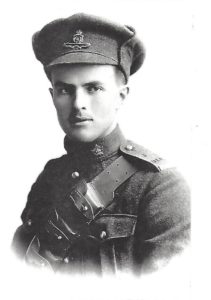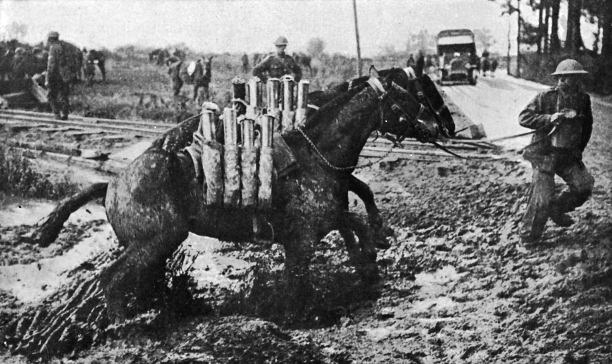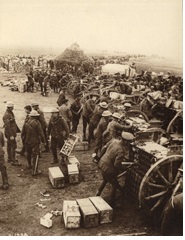Percy Balfour Seymour 1891 – 1962
Member of the Canadian 3rd Division Ammunition Column, January 1916 – March 1919
This is a brief summary of Percy Seymour’s service in one of Canada’s under reported military units during World War 1.
The Canadian Divisional Ammunition Column’s (CDAC) purpose was to supply munitions from ordnance depots behind the “Front” to the artillery batteries or to the trenches themselves. Canada’s Third Division was recruited in early 1916, arriving on the battlefields of Flanders in July 1916.
Percy was likely chosen for the Ammunition Column as he knew how to care for and drive horses from his farm upbringing. The Seymour’s were horse experts for many generations previously, and I expect that this knowledge was important for his selection.
Most CDAC members were classified as “drivers”. The vehicle most often used was a horse drawn cart. Horses, lighter carts, and men were more maneuverable than unreliable small trucks, and with the ground constantly changing due to bombardments, and crater holes full of mud, that was paramount. Often, a driver would lead two pack horses or mules strapped to their backs. Other non-officer rank positions in the unit included gunners, bombardiers, shoe smiths, farriers, veterinary sergeants, and saddlers.
Travel was often at night to hide the activity from the German spotter planes and long range binoculars. One family story has Percy leading a pack mule with 4 shells attached, through no-man’s land in the dark to feed the trenches. He could have been killed many times over according to his commanders, but was not.
The 3rd CDAC, assembled and did its initial training in Toronto, leaving for England on board the “Metagama” on March 11, 1916 from St. John New Brunswick.
The picture below is the unit, in Toronto prior to debarking for England. In total, the number of members were 610. Their commander was Lt. Col. William Hurdman from Ottawa.
Archives Canada has details of all military units preserved in diaries. Hurdman’s is most interesting, describing the weather, enemy operations as well as the generalized duties of each day. Mention is made of meritorious conduct and of the casualties.
With this to guide me, I am researching the details of his service. These details are with family members and within his personal service records at Archives Canada. Some Canadian soldiers have their full service, medical and attestation records digitized for public viewing.
On August 9th 1916, at the Somme, 8 members of the 3rd CDAC’s were gassed. One driver, Reg Dyson was killed. Hurdman described his death as being from a “stray bullet.” Our family records also has Percy being gassed at the Somme, recovering and returning to active duty as a driver for the balance of the war. Percy may have been one of the eight to be hospitalized that day / night. Percy’s had lasting effects of the gas attack through his life with no recorded burns, thus I assume the gas was chlorine. Victims of gas attacks or other wounds, would be evacuated back from the lines, to field bandage units and onto hospitals. Some returned to England for treatment and convalescence. Percy’s recovery details are within the archives, the details yet to be uncovered.
Loading shells into horse carts
King George visiting the Troops in Aug 14, 1916, including the 3rd CDACs
From Hurdman’s diary, another interesting find was Walter Ellingsworth. He was cited for bravery in 1916, but was discharged in December 1917, when he was found to be only 17, (15 when he signed up).
Major battles 3rd CDACs participated in: Somme, Vimy Ridge, Passchendaele, Amiens, Cambrai.
Above is Lt. Col. Hurdman’s diary account in the lead up to and start of Vimy Ridge action (April 9, 1917).
But the remembering of those who served and died, and those who served and survived, should entail more than just their service records. We need to understand and know the men (and women), who served; their mind sets, their personalities and why they committed to putting their lives on the line. And in this age of awareness of PTSD and the effects of war on civilian populations, a look at how these individuals lived following their war experiences, is also important. They all had unique lives.
“Driving Through Hell” my concept for a book, can be a story not only of service in battle for Canada, but of four men who came from different backgrounds to serve together and their resultant lives following The Great War. A story to unfold …






